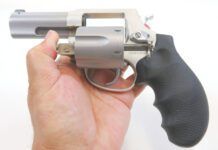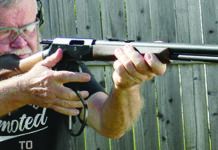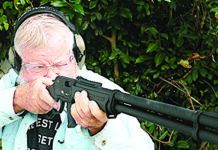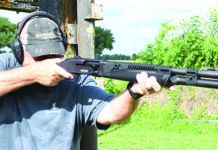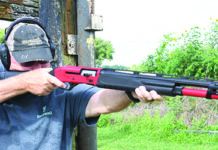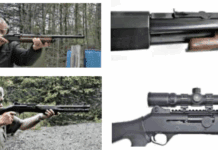
300
This rifle was something of a sleeper. Superficially, it resembled the Briley, but with a shorter barrel and gray-colored laminated stock that had a cheekpiece. Unfortunately, the cheekpiece was of the roll-over type, which the Volquartsen also had, making them less than ideal for left-handers. The Briley alone was ambidextrous. Short of opting for a left-handed stock, the elimination of the roll-over portion of these two stocks would make the rifles easier to use by lefties.
When we further assessed some of the Clark’s details, we were impressed. The inletting was okay, about midway between Briley and Volquartsen. The forend held a clue, though, to some serious accuracy thinking by Clark. The 21.3-inch gray-colored stainless barrel was tightly bedded for about 2 inches in front of the blued Ruger receiver. Then it was floated until near the front of the forend, where it had — once again — significant upward pressure, and also full support on the sides of the barrel.
The Clark’s butt had a black rubber pad marked “Eliminator.” It gave good

300
traction and was expertly mounted. Stock finish was once again excellent. Again there was no checkering, but this time the pistol-grip shape was perfect for us. It had just enough curve to give excellent control while allowing us to pull the stock in firmly without danger of the hand slipping.
The wrist was small enough to give a feeling of confidence, and the overall balance of the rifle (without scope) permitted easy holding for offhand work. The forend was wide, but the least comfortable of the trio of test rifles. We would have liked it to be more rounded, like that of the Volquartsen. The sharp top edges bothered some shooters who like to wrap the left-hand fingers around the forend.
The trigger pull was clean and extremely consistent, breaking at 2.7 pounds. We put our Leupold 36X onto the Clark and repaired to the range. There we found no problems, and the finest accuracy of all three rifles. We also fired the smallest group of this test, 0.4 inches for three shots at 100 yards. That was with Hornady’s fodder, which also averaged the smallest overall groups at 0.6 inch. This time the CCI was the worst, giving 0.8-inch
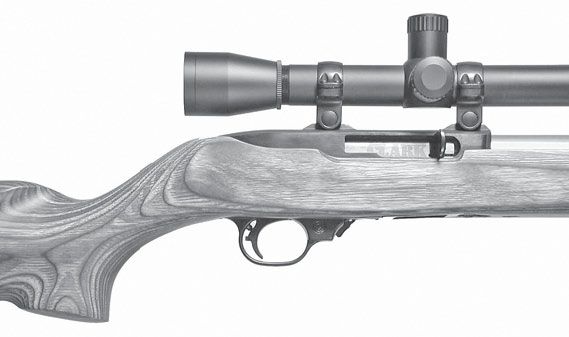
300
groups. This was one shootin’ machine, and the more we shot it, the more we liked it.
How did Clark achieve this? We suspect the unusual bedding helped. We went looking for clues, and found more details online. Per Clark’s website, Clark .22 LR, .22 Magnum, and 17 HMR barrels are machined from Lothar Walther premium-grade blanks. Clark uses its proprietary chambering reamer, and also puts a recessed match crown on the barrels. Barrels are available with 0.920-inch round (bull), fluted or mid-weight configurations and come in blued or stainless steel. While the standard barrel length is 21.5 inches, Clark will cut barrels to any length specified by customer down to 16.25 inches.
There was no quick-change lever on the magazine release, but one could be added for $15. Clever home workmen could add one easily themselves. Clark has many options available, including the use of the original Ruger stock if desired, for a saving of $95. However, a laminated stock by itself costs more than that, so adding it to the package seems like the smart way to go. We suggest the prospective buyer become aware of Clark’s available options before placing an order for a rifle.



